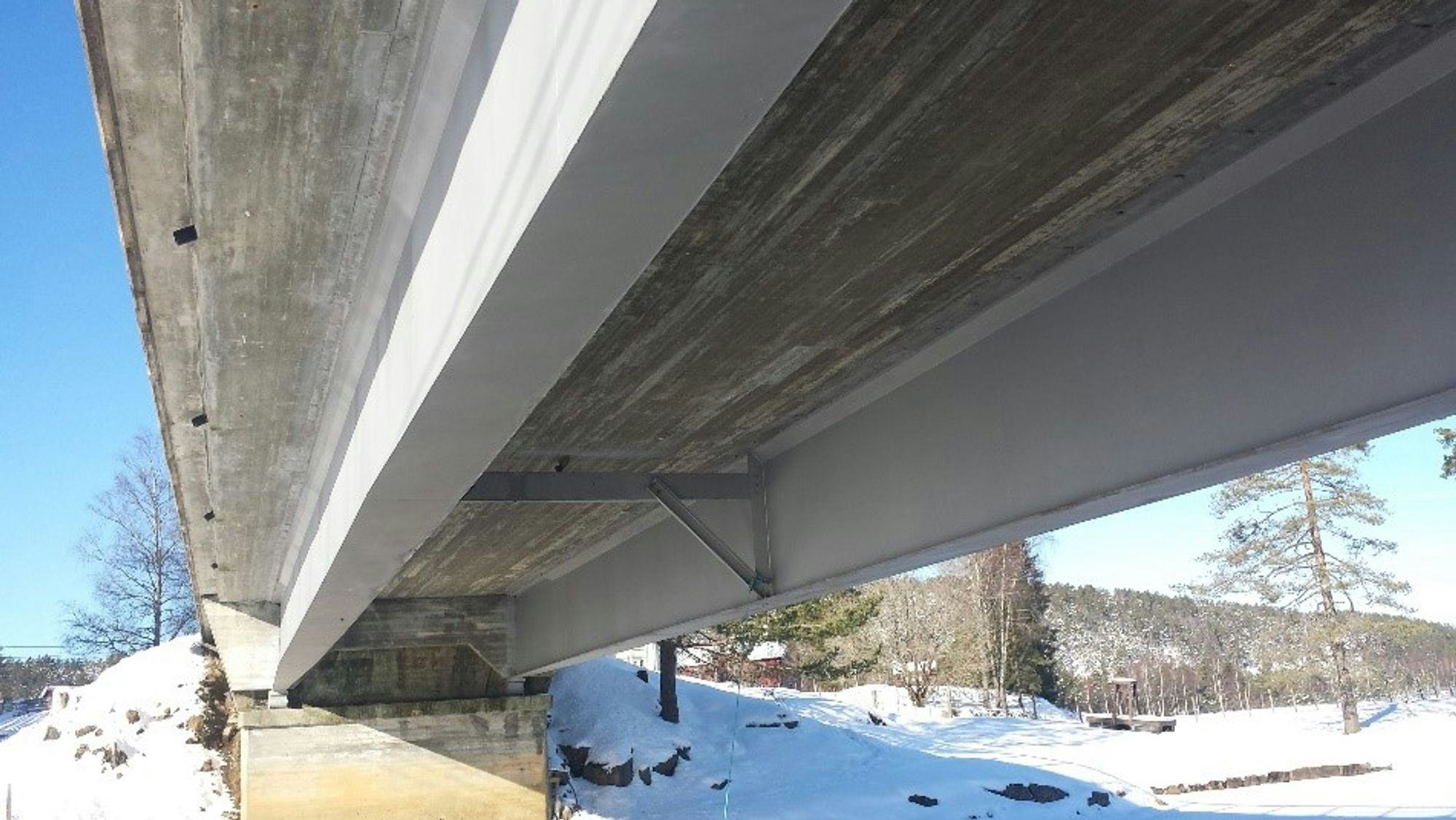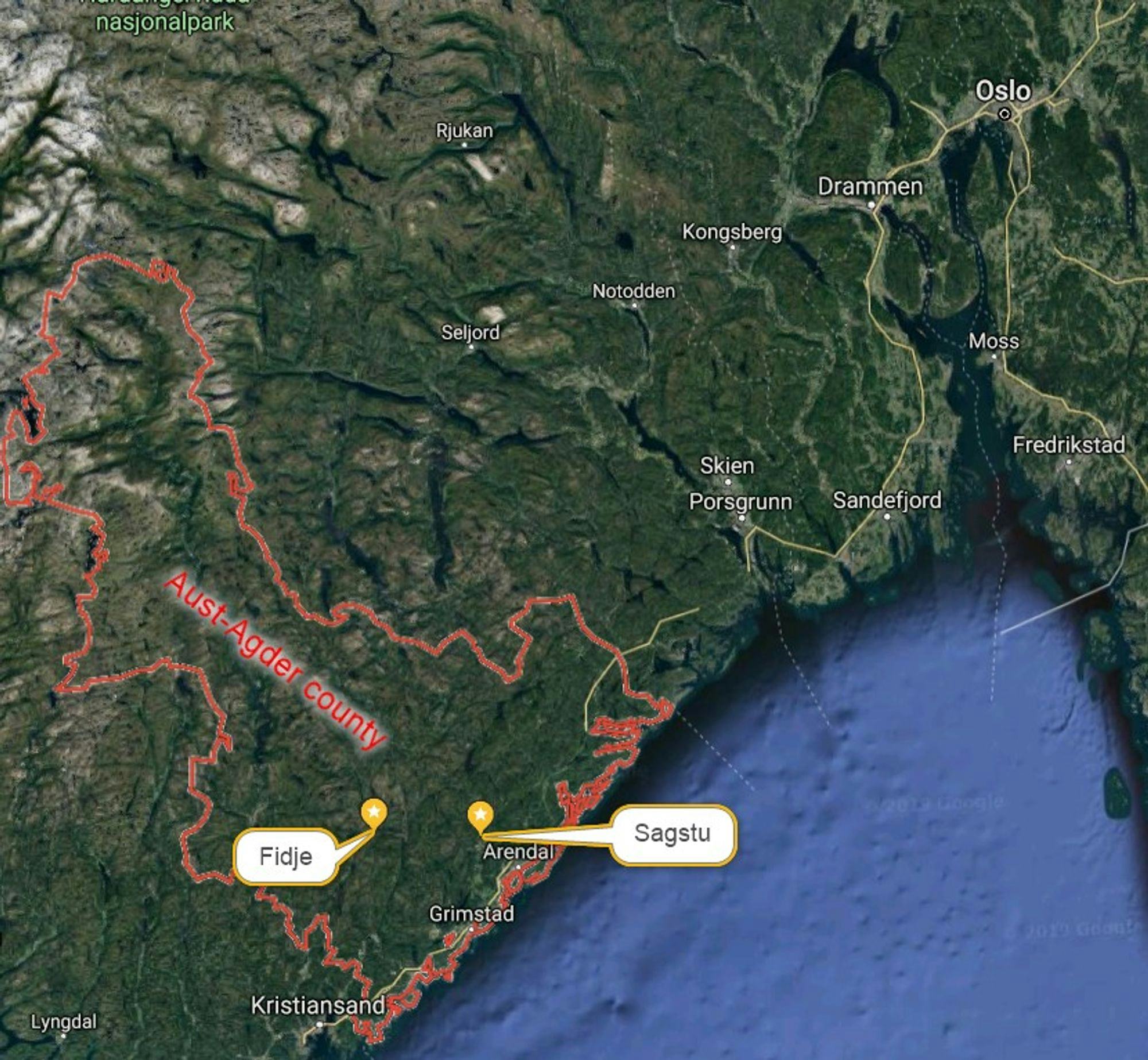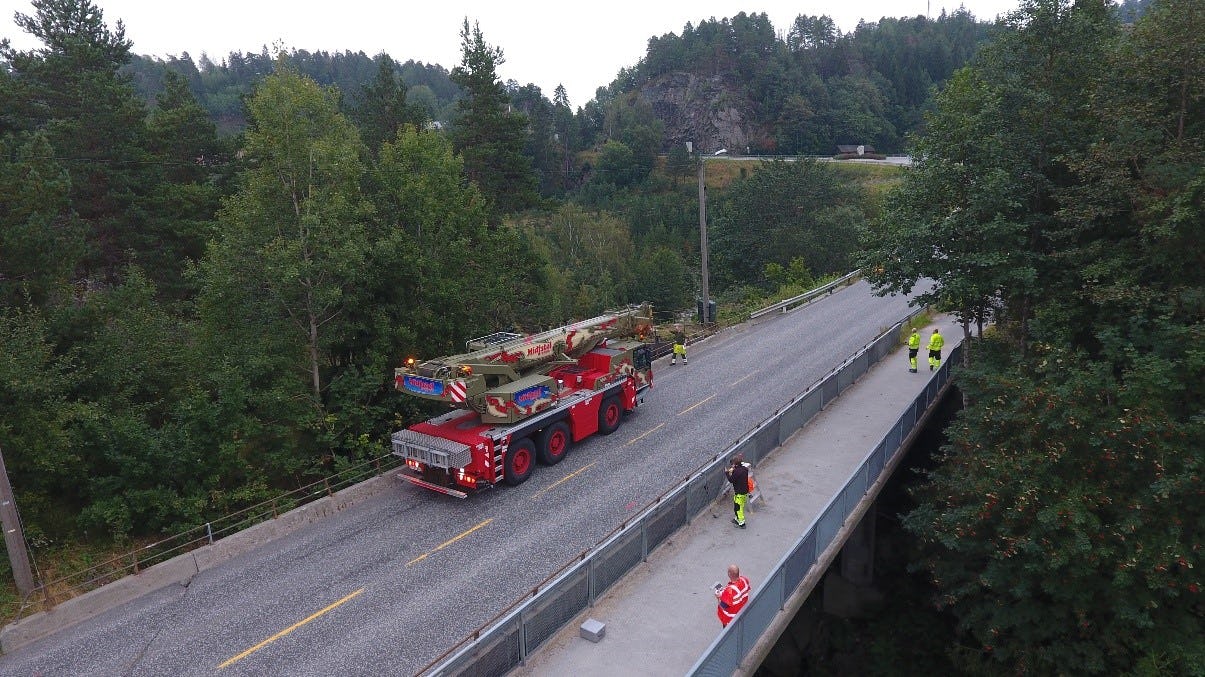
EFLA has provided consultancy to Agder County Municipality for strengthening of two old steel girder bridges in Agder in Norway.
Old bridges requiring strengthening
Sagstu and Fidje are about 30 meters long bridges located in Agder county in Norway. They are approximately 50 years old, single-span steel girder bridges, with concrete slabs without a shear connection between the steel and concrete. This means that the concrete slab sits on the steel girders and distributes traffic loads to the girders without contributing to the load-bearing capacity of the bridge.
The bridges have been a bottleneck for heavy-duty timber transport in the area. Like many other bridges constructed around the same time, they do not have a bearing capacity that meets the requirements of today. EFLA was commissioned to provide a strengthening design for the bridges, in order for them to be classified according to present-day requirements. After assessing possible strengthening solutions and conversations with the owners of the bridges and the national bridge authorities, the conclusion was to strengthen the bridges by forming a shear connection between the concrete slab and the steel girders. The result is a composite bridge.
 1 / 2
1 / 2Fidje bridge before strengthening
No mechanical connection between the steel girders and the concrete slab
 2 / 2
2 / 2Location of Sagstu and Fidje bridges in Agder
Cooperation with Luleå University of Technology
As a part of the project, a loading test was carried out on the Sagstu bridge, in which measurements were done before and after installation of the coiled pins. The aim was to confirm that the bridge has full composite action after the works have been completed, and can therefore be classified corresponding to modern bridges. The work was completed and approved by the team from Luleå in January 2020.
A new method
There are examples of steel girder bridges in Norway that have been strengthened by implementing composite action. The method used for this project has however never been applied before in Norway. The connection between the concrete and steel is made by installing coiled pins from the underside of the bridge deck. The pins are fitted into drilled holes through the top flange of the girders and into the concrete slab and therefore no welding of the steel nor chiselling of the concrete is required. The method has been studied at Luleå University in Sweden. A team from the university has been EFLA's partner in the project.
This method has been found to have advantages, particularly regarding traffic disruptions. The alternative is to chisel the concrete from the road surface and weld the pins to the top flanges of the steel girders, which requires temporary closure of the bridge. Additionally, it has been shown that the new method is competitive in terms of cost and it can also be considered environmentally friendly due to prolonged use of existing materials and relatively little use of new steel.

Strain-gauging measurements A fire truck used for strain-gauging measurements on Sagstu bridge
Additional services
In addition to the strengthening of the bridge, concrete maintenance and renewal of the bridge parapets were specified by EFLA. This has ensured a prolonged life span for the bridges.
Environmental issues
- The method
The method for bridge strengthening used in the project has never been applied in Norway before. It can be considered environmentally friendly as it does not require much use of new construction materials, thus leading to a minimized carbon footprint. In addition, it limits adverse effects on traffic during construction.
EFLA's role
- Strengthening design
- Design and definition of concrete maintenance and parapet renewal
- Follow-up and consultancy during the construction period
The project's long term benefits
Bridge strengthening and concrete maintenance have led to improved structural capacity and traffic safety for the bridges.
This has secured an extended life-span, saving on the construction materials and carbon footprint that would have been associated with the construction of new bridges.